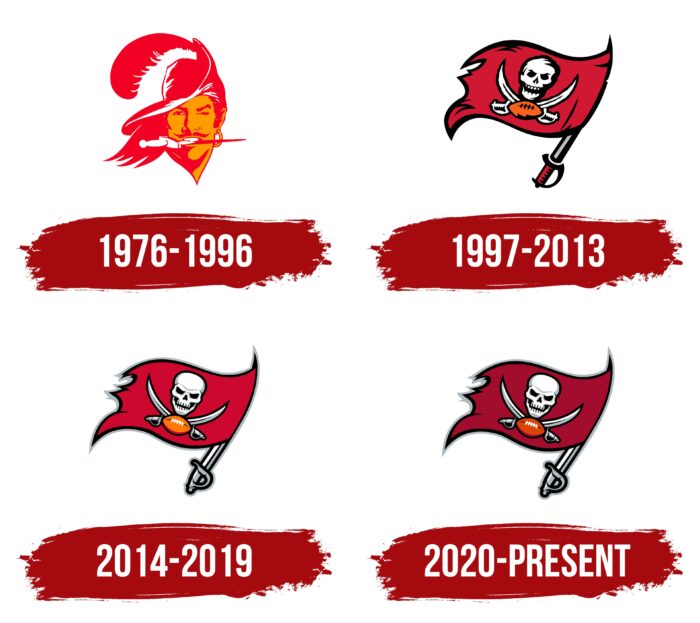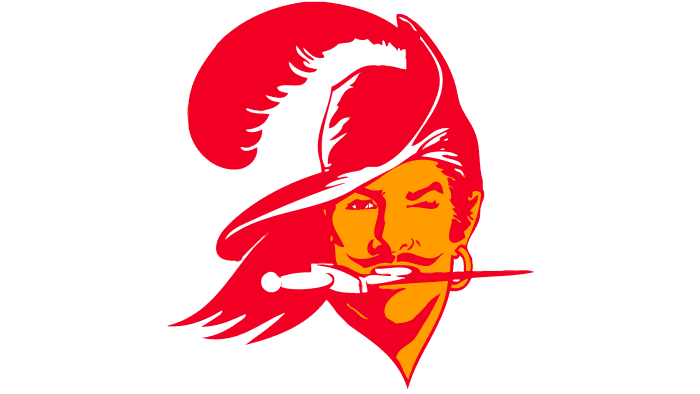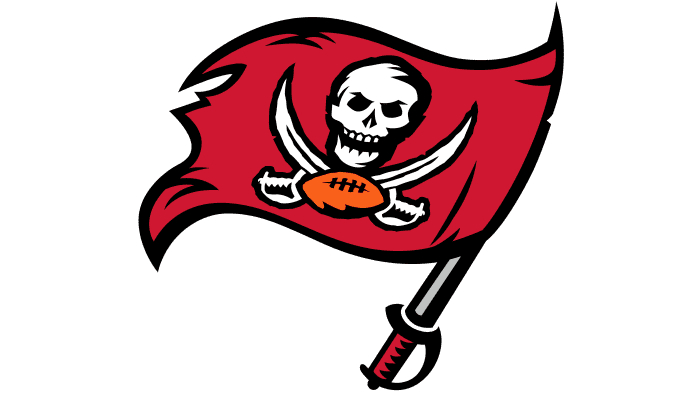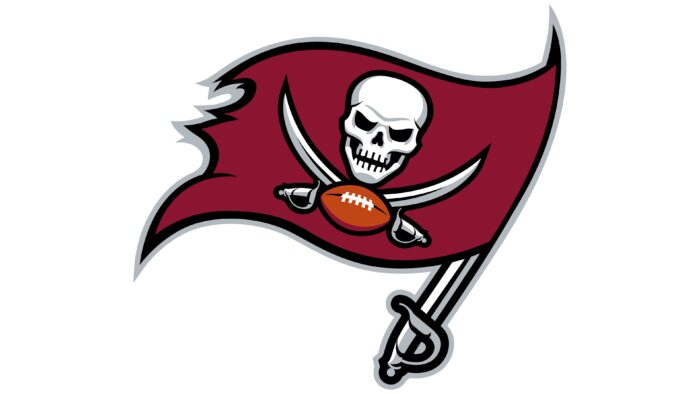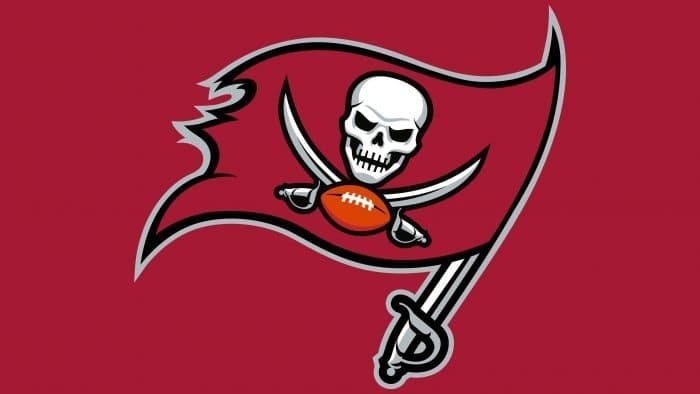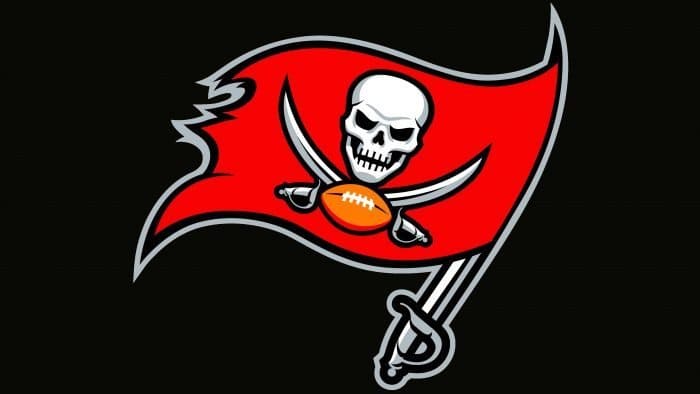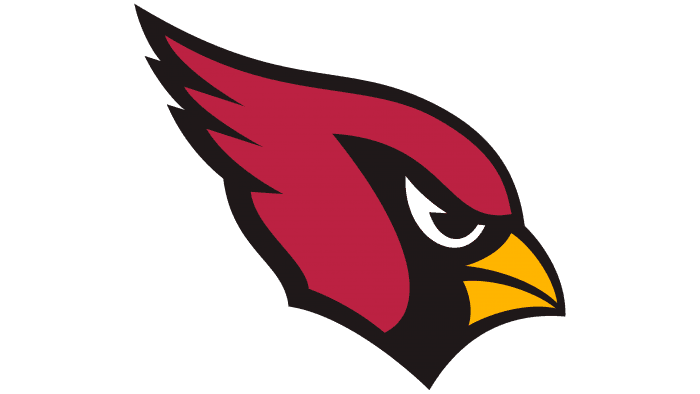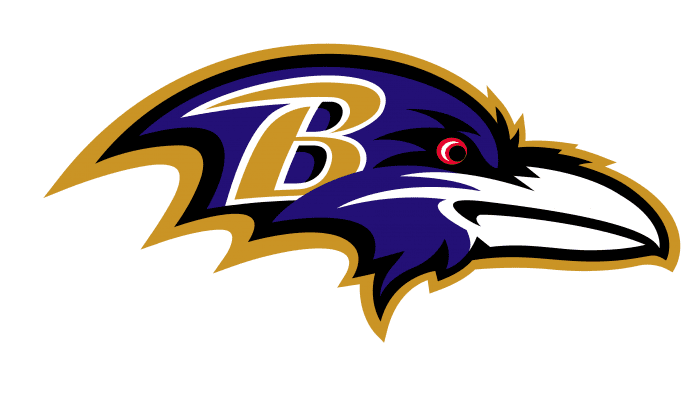The Tampa Bay Buccaneers logo, representing the football club, closely connects to the region’s history. The modern style has added aggressiveness, increasing recognition due to its caricature and eccentricity.
Tampa Bay Buccaneers: Brand overview
| Founded: | April 24, 1974 |
| Founder: | Glazer family |
| Headquarters: | Tampa, Florida, U.S. |
| Website: | buccaneers.com |
The Tampa Bay Buccaneers are a professional-level football team from the USA participating in the NFL, of which they have been a member since 1976. The team represents the NFC’s southern division and is based in Tampa, Florida.
As part of the AFC project, the club was founded as one of the 28 expansion franchises planned for the 1970s. According to it, each new structure was to play the first two years in different divisions. Therefore, the Buccaneers debuted in the Western branch and then moved to the Central. 2002, it merged with three former NFC West teams, forming the Southern Division.
Tampa was one of the first cities to which the American Football Conference decided to grant a club. Its cost was $16 million. In April 1974, the AFC acquired the franchise for the owner of a local construction company, Tom McCloskey. However, he was dissatisfied with the deal and withdrew a month later.
A Jacksonville attorney, Hugh Culverhouse, wanted to buy the club. Once, he accepted an offer from the “Los Angeles Rams,” but could not, as Robert Irsay sold the team. The wealthy businessman was determined and eventually got the Tampa Bay Buccaneers, which he led until 1994. After the first owner’s death, his son Hugh Culverhouse Jr., a Miami attorney, inherited the team. He, in turn, forced trustees to sell the nearly bankrupt sports organization.
Among the interested parties were George Steinbrenner (head of the New York Yankees) and Peter Angelos (head of the Baltimore Orioles). This put the franchise’s continued presence in Tampa in doubt. However, at the last moment, Malcolm Glazer outbid the offer, paying $192 million. The new owner immediately involved his sons Bryan, Edward, and Joel to make the club successful. The Glazer family has been managing the club steadily since 1995.
The franchise was named in 1975. It was chosen from 400 options, having gone through a phased competition. In the final stage, “Mariners,” “Buzzards,” and “Coastal Tides” competed. It is associated with corsairs – pirates who often attacked the coast of Florida in the 17th century. In the modern version, the name is often used in its abbreviated form – Bucs.
Meaning and History
The debut logo was presented on April 14, 1975. Its author was Lamar Sparkman, a cartoonist from the Tampa Tribune, who had long worked as a designer for sports clubs. He created a graphic image of a Corsair in a feathered hat, which he used for 20 years. The team’s official colors are orange (referring to Tampa’s citrus industry), red (symbolizing the sun, warmth, courage, and endurance), and white (serving as the background).
What is Tampa Bay Buccaneers?
The Tampa Bay Buccaneers are a football franchise based in Tampa, Florida. The team’s headquarters (in the One Buccaneer Place building) and home stadium, unofficially known as Ray Jay, are located here. The team has existed since 1974 and has played in the NFC South since 2002.
1976 – 1996
The “Tampa Bay Buccaneers” emblem was a pirate throughout this period. The artist decided to make the pirate special, unlike the emblems of pirates from other teams. The pirate is depicted with a dagger in his teeth, a large earring, a mustache, and a wide-brimmed hat with a large feather. Bucco Bruce (as he was nicknamed) smiles slyly and squints his left eye. The author admitted that these results are based on combined images of Errol Flynn, Jean Lafitte, and the musketeer D’Artagnan.
1997 – 2013
In 1997, the club’s management changed the logo to an aggressive one. Its task was to improve the team’s image and add popularity, coolness, and recognizability. Therefore, a dark red pirate flag with a skull and crossed sabers was used instead of a Corsair. The depicted Jolly Roger resembles Calico Jack. In the foreground is an orange ball. All elements have a black border and dark strokes, creating a frightening impression.
2014 – 2019
In 2020, the Tampa Bay Buccaneers introduced a new logo based on the previous version. From a compositional point of view, nothing has changed: the same Jolly Roger menacingly smiles from the dark red flag and looks forward with empty eye sockets. The artists also depicted three sabers: two are crossed under the skull instead of bones, and one more serves as the “mast” for the flag. There is also a football located under Jolly Roger’s head.
In this version, the previous emblem is slightly reworked:
- The skull does not laugh but frowns and smirks.
- The palette of the canvas is shifted towards scarlet.
- The red color disappeared on the handle of the stylized “mast.”
Also removed are the black streaks and the wide border line, which has become somewhat thinner. The football received a scarlet sparkle at the bottom and a white lace. All details are outlined in a dark color.
2020 – today
In 2020, the logo did not undergo radical changes, and many fans did not notice. However, according to the club, the bright red color on the main emblem has become more muted, and accordingly, the ball’s color has changed from bright orange to duller.
Tampa Bay Buccaneers: Interesting Facts
The Tampa Bay Buccaneers, or “Bucs,” are a football team with a lot of history since they joined the NFL in 1976. They’ve had ups and downs but also some exciting moments.
- Starting: The Bucs joined the NFL in 1976, the same year as the Seattle Seahawks, for 28 teams.
- Tough Beginnings: Their first season was rough. They lost all their games, and their losing streak lasted 26 games until they finally won in December 1977.
- Winning Big: They’ve won the Super Bowl twice. The first win was in 2003 against the Oakland Raiders, and the second was in 2021 against the Kansas City Chiefs.
- Home Field Advantage: In 2021, the Rams were the first team to play (and win) a Super Bowl in their stadium, Raymond James Stadium.
- Pirate Ship Stadium: Their stadium is cool because it has a giant pirate ship celebrating when the team does well.
- Original Uniforms: People remember their old “Creamsicle” orange uniforms and the “Bucco Bruce” pirate logo, even though they changed it in 1997 to red and pewter colors.
- Better Days with Tony Dungy: Tony Dungy was a coach who helped turn the team around in the late ’90s, making them good enough to win a Super Bowl.
- Famous Players: They’ve had some great players like Lee Roy Selmon, Warren Sapp, Derrick Brooks, and John Lynch, who are all in the Hall of Fame.
- Derrick Brooks: Derrick Brooks is one of the best linebackers ever. He spent his 14-year career with the Bucs and helped them a lot.
- Tom Brady Joins: When quarterback Tom Brady joined the Patriots in 2020, he immediately helped them win another Super Bowl.
The Tampa Bay Buccaneers’ journey has been full of challenges and amazing victories, making them a special team in the NFL.
Font and Colors
The current emblem has nothing in common with the first version – a militant corsair, armed to the teeth. This view appeared on April 14, 1975. Its creator was Lamar Sparkman, a cartoonist who worked as a Tampa Bay Buccaneers team designer. The portrait of a sailor in a wide-brimmed cloak was used for 20 years until Jolly Roger replaced it.
Depicting a skull with sabers, the artists wanted to make it similar to Calico Jack, a famous pirate from the early 18th century. The club, in turn, sought to improve its image and become more recognizable. And in this, it was helped by a new emblem – seemingly aggressive but caricatured and cartoonish.
There is no inscription on the pirate flag or next to it. The logo developers did not create an individual font or use an existing one – they limited themselves to a graphic image of Jolly Roger. Hence, they carefully approached the choice of colors.
The 2020 emblem differs from the identical 2014 version only in shades. The flag’s canvas is dark red, almost wine-colored. The skull and sabers are traditionally white, with light gray shades giving them volume. The ball, as before, is brown. All contours around the elements are black; only the flag with the “mast” is outlined with a wide gray line.
Tampa Bay Buccaneers color codes
| Buccaneer Red | Hex color: | #a30d2d |
|---|---|---|
| RGB: | 163 13 45 | |
| CMYK: | 29 100 77 19 | |
| Pantone: | PMS 187 C |
| Pewter | Hex color: | #101820 |
|---|---|---|
| RGB: | 16 24 32 | |
| CMYK: | 67 54 45 74 | |
| Pantone: | PMS Black 6 C |
| Bay Orange | Hex color: | #dc4405 |
|---|---|---|
| RGB: | 220 68 5 | |
| CMYK: | 13 98 100 1 | |
| Pantone: | PMS 1665 C |
FAQ
What does the Tampa Bay Buccaneers logo mean?
The franchise’s emblem depicts a flag attached to a saber. A modified “Jolly Roger” is displayed on the dark red canvas: a human skull, two crossed sabers, and a football. This was an attempt to reflect the pirate theme without repeating the emblems of other sports teams.
Did the “Tampa Bay Buccaneers” change their logo?
Yes, the Tampa Bay Buccaneers changed their logo in 2020. It still represents a stylized pirate flag but differs from the previous version in a darker color scheme.
What was the original logo of the Tampa Bay Buccaneers team?
The Tampa Bay Buccaneers’ first logo depicted a long-haired pirate’s head in a hat with a large feather. The sailor winked with one eye and clenched a short saber in his teeth. His image was complemented by a round earring in his ear—the basis of the color scheme: red, orange, and white.
Who created the Tampa Bay Buccaneers logo?
Cartoonist Lamar Sparkman developed the team’s original logo with the head of a pirate. The first version of the pirate flag was created by the designers of the Tampa Bay Buccaneers in conjunction with the NFL.

